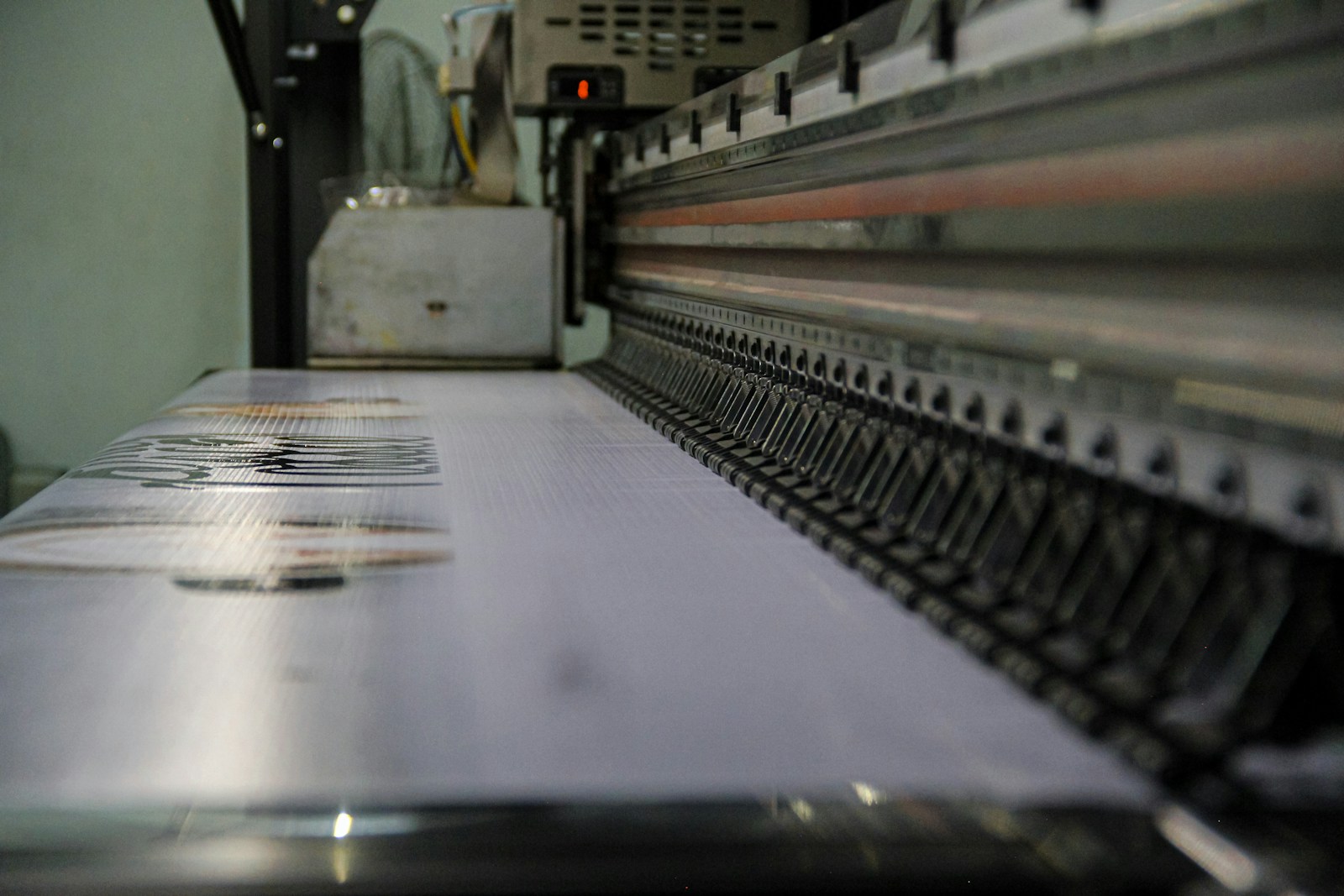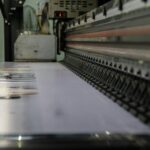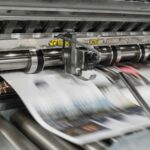The printing industry is undergoing a green revolution. As environmental regulations tighten and eco-conscious consumers demand more sustainable solutions, print service providers are leaning hard into innovation. From smart automation to biodegradable inks, 2025 is shaping up to be the year sustainability moves from aspiration to operational standard.
Here’s a closer look at the most impactful sustainable printing trends to watch right now:
1. Eco-Friendly Materials & Biodegradable Inks
Sourcing and substrate choices are evolving fast. Printers are increasingly using:
- FSC- and PEFC-certified paper
- Recycled pulp
- Non-wood fibers like hemp, sugarcane bagasse, bamboo, and wheat straw
These alternatives dramatically reduce deforestation and water usage during production.
At the same time, ink formulations are going green:
- Soy- and vegetable-based inks offer low VOC emissions and biodegradability
- Water-based inks are safer for workers and the environment
- UV-curable inks cure instantly under LED lights, reducing energy consumption and waste
Some innovators are exploring algae-based inks as a future-forward solution that’s both renewable and carbon-neutral.
2. The Circular Economy: Refills, Reuse & Remanufacturing
The days of single-use toner cartridges are fading. In 2025, more than a quarter of cartridges sold are remanufactured or refillable, according to industry data. That shift is reducing plastic waste by an estimated 40% annually.
Major OEMs and third-party suppliers are pushing:
- Take-back programs for used cartridges
- Bulk refill stations
- Closed-loop systems that return materials back into production
Circularity is also impacting packaging, with biodegradable wraps and minimalist box design becoming standard practice for sustainable fulfillment.
3. AI-Powered Print Optimization
Artificial intelligence is transforming sustainability into a data-driven science. AI is now being used to:
- Predict and prevent press downtime (reducing material waste)
- Automate job batching for efficient use of paper
- Optimize ink and toner consumption in real time
- Provide carbon footprint reporting per print job
Smart dashboards also allow facility managers to monitor energy use, emissions, and waste generation—enabling real-time sustainability tracking and compliance with ESG goals.
4. Waterless and On-Demand Printing
Traditional offset printing relies heavily on water and chemicals. Enter waterless printing, which eliminates dampening systems and uses silicone-coated plates to deliver high-resolution prints with zero wastewater.
Meanwhile, digital print-on-demand (POD) is slashing overproduction waste. Short-run jobs, personalized marketing pieces, and agile packaging solutions can now be produced exactly when needed—reducing inventory costs and emissions from storage and shipping.
In industries like book publishing and apparel, this has led to the rise of zero-inventory models that print only what sells.
5. Energy Efficiency and Renewable Power
LED-UV curing technology is replacing traditional heat-intensive drying systems. These LED systems:
- Use 75% less energy
- Last 10x longer than mercury lamps
- Enable instant-on/off functionality
Many printing facilities are also investing in solar panel arrays, wind energy procurement, and green building certifications (like LEED) to further lower their carbon footprints. A growing number of commercial printers are now proudly operating as carbon-neutral enterprises.
6. Sustainable Packaging & Regulatory Pressure
Extended Producer Responsibility (EPR) laws are now in effect in states like California, Maine, and Oregon, forcing brands and printers to take ownership of packaging waste.
This has sparked a wave of innovation in packaging design:
- Mono-material packaging that’s easier to recycle
- Compostable film wraps
- QR-code-based recyclability info on labels
Brands are also using eco-labeling to communicate sustainability claims more transparently—an essential step as consumers grow wary of greenwashing.
7. Emerging Tech: Inkless Printing, Nanotech & Natural Dyes
Advanced R&D is opening doors to radically sustainable techniques:
- Structural color printing uses nanostructures to reflect color—no pigments or inks required
- Nano-purified inks improve precision and reduce excess
- Natural dyes and mud-resist (Dabu) techniques are seeing a revival in sustainable textile printing
These technologies are in early-stage commercialization but promise long-term shifts in how materials are decorated, dyed, and designed—with minimal environmental impact.
What This Means for the Industry
| Category | What’s Changing |
|---|---|
| Costs | Savings from lower material waste, reduced ink usage, and energy-efficient hardware |
| Compliance | Growing pressure from laws like EPR and demand for eco-label certifications |
| Brand Value | Eco-conscious consumers are rewarding transparency and verified sustainability |
| Opportunities | Investment in AI, green packaging, POD, and closed-loop cartridge programs |
Final Take
Sustainability in printing is no longer a niche—it’s a necessity. In 2025, the most successful print operations will be those that combine cutting-edge automation with eco-materials, renewable energy, and circular business models. At the same time, next-gen innovations like inkless printing and nanotech inks are on the horizon, promising even greater environmental gains.
Whether you’re a print service provider, a packaging brand, or a facility manager, the message is clear: sustainable printing isn’t just about doing less harm—it’s about building a smarter, leaner, and more resilient business for the long haul.
Key Takeaways
- Labels made from plant-based films and compostables are becoming the norm, and they still look great on the shelf.
- Water-based inks and safe adhesives cut out nasty chemicals and make full-package composting possible.
- Smart labels and eco-minded design help brands stay compliant and win over green-minded shoppers.
Eco-Friendly Printing Materials
The sustainable packaging movement is really picking up steam as we head through 2025. Eco-friendly label solutions are front and center in retail and consumer goods, and honestly, it’s about time. Brands are making the switch to plant-based films, compostable stuff, and responsibly sourced paper as they try to shrink their environmental footprint—without sacrificing quality. These greener choices don’t just help companies tick off regulatory boxes; they also let them stand out as sustainability leaders in a market that’s more eco-aware than ever.
Why now? Well, consumers are demanding more openness and genuine responsibility from the brands they buy. New advances in water-based inks, biodegradable adhesives, and even “smart” label tech are making it way easier (and less intimidating) for businesses of all sizes to get on board. And it’s not just about materials anymore—waste reduction strategies and circular design are quickly becoming the backbone of packaging decisions.
The printing industry is finally embracing materials that are easier on the planet, but still deliver the performance everyone expects. The focus is on biodegradable options, recycled content, and chemical formulas that don’t wreak havoc on ecosystems.
Biodegradable and Compostable Substrates
Plant-based films are dominating the biodegradable label scene in 2025. These break down naturally in commercial composting—no toxic leftovers. PLA (polylactic acid) film, made from corn starch or sugarcane, is a popular swap for petroleum plastics.
Compostable paper labels with wildflower seeds? Yep, they’re a thing now for short-term products. After use, you just plant them and, with a bit of luck, flowers pop up where your label used to be.
Mushroom-based materials are also making waves. Made from agricultural waste and mycelium (basically mushroom roots), these break down in weeks, not decades.
There are even water-soluble films now for temporary labeling—they just dissolve away in water processing, so there’s no more headache about separating them for recycling.
Recycled and Recyclable Labels
PCR (Post-Consumer Recycled) content is pretty much standard now for a lot of labels. Using 30–100% recycled stuff helps close the packaging waste loop.
Mono-material labels are finally replacing the old multi-layer ones that used to mess up recycling. Single-material labels now hold up just as well and are way easier to process.
If you see the Forest Stewardship Council (FSC) logo on a label, it means the paper comes from forests that are actually managed responsibly. That’s non-negotiable for most brands these days.
Washable adhesives—yeah, they’re a game changer. They come off clean in recycling, so the rest of the container can be processed without gunking up the works.
Sustainable Inks and Coatings
Water-based inks have pretty much taken over from solvent-based ones in 2025. They cut VOC emissions and are safer for workers, which, frankly, should’ve happened sooner.
Algae-based inks are catching on too—they use carbon-capturing algae, so they’re not just less polluting, they actually help pull CO2 from the air during production.
LED-curable inks are another big step up—using about 80% less energy than old-school UV systems, and they cure instantly at lower temps. That means less heat, less energy, and less waiting around.
Bio-based varnishes from veggie oils and plant resins are now a solid alternative to petroleum-based coatings. They protect just as well but are way kinder to the environment.
Innovative Waste Reduction Strategies
Printing companies are getting smarter about cutting waste at every stage of the production cycle. Not only does this help the planet, but it’s also just good business—less waste means more money saved.
Lean Manufacturing and Print-On-Demand Models
Print-on-demand has really shaken things up. Instead of cranking out huge batches that might just sit on shelves (or worse, get trashed), companies print exactly what’s needed, when it’s needed. This alone can cut paper waste by up to 30% over the old batch-printing way.
Lean manufacturing—think 5S, Kaizen, all that—has helped shops spot and cut out wasteful steps, with material waste dropping by 15–25% in a lot of places.
Digital workflow tools now track everything as it happens, so if something’s off, operators know right away. Smart monitors even flag when material use creeps above where it should be.
Efficient Material Usage Techniques
Nesting software is kind of a must-have now. It automatically arranges multiple print jobs on a single sheet to use every last inch. The best algorithms can boost material use by 8–12% over manual layouts.
Right-sizing is another simple fix—just matching paper dimensions to the actual job. It sounds obvious, but it can cut trim waste by up to 20%.
Common Material Efficiency Techniques:
- Digital pre-press proofing (saves 5–10% in materials)
- Ink optimization software (cuts ink use by 15–20%)
- Automated color calibration (means fewer test prints)
- Variable data printing (no more piles of obsolete stock)
Recycling and Reuse in Production Processes
Closed-loop recycling is changing the game. Paper scraps and misprints get collected, processed, and fed right back into production as recycled content.
Water-based cleaning systems now recycle solvents from press cleanups. They filter out the gunk so the same solution can be reused a bunch of times before it finally gets tossed.
A lot of print shops have set up sorting stations for paper, plastic, metal, and chemicals. This simple step has bumped up recycling rates by 40–60% in many places.
Ink reclamation devices grab leftover ink from presses and storage. That ink gets reblended for less color-critical jobs, saving 10–15% on new ink purchases.
Advancements in Eco-Conscious Printing Technologies
The printing world is getting a lot greener, thanks to new tech that cuts waste, slashes energy use, and churns out products that are easier on the earth.
Digital Printing for Minimal Waste
Digital printing has been a total game changer for eco-friendly printing. Unlike old offset methods that need plates and tons of setup (and waste), digital printing just prints what you need, when you need it.
Print-on-demand means you order exactly what you want—no more huge overruns gathering dust or heading to the dump.
Modern digital presses use water-based inks with way fewer VOCs than petroleum-based ones. They’re less polluting and easier to wash out during recycling.
Automated color management is now baked into a lot of digital systems, so there’s way less waste from test prints and color tweaks. Some manufacturers even say they’ve cut paper waste by up to 40% this way.
Energy-Efficient Equipment
Printing equipment is finally getting smarter about energy. New presses have energy-saving modes that drop power use by up to 80% when idle.
LED-UV curing is replacing those old mercury lamps, using 70% less energy and making bulbs last way longer—sometimes years instead of months. Plus, there’s no ozone and way less heat.
Key Energy Efficiency Improvements:
- Heat recovery systems that capture and reuse waste heat
- Smart sensors to optimize power use based on what’s actually being printed
- Carbon-neutral printing using renewables or offsets
- Quicker warm-up times, so machines aren’t burning energy waiting around
Some printers are even hitting carbon neutrality by installing solar panels or buying renewable energy credits. It’s not perfect, but it’s progress.
Smart Label Design for Sustainability
Labels are getting an eco-makeover too. Minimalist designs use less ink but still look sharp, which is a win-win.
Plant-based and compostable materials are replacing plastic films. The latest biodegradable labels break down in industrial composters without leaving microplastics behind.
QR codes and digital features mean you can fit more info online, so labels can be smaller and use less material.
Innovative Label Technologies:
- Linerless labels (no backing waste)
- Water-soluble adhesives for easy recycling
- Single-layer labels replacing old multi-material ones
- Digital watermarks that help recycling sorters do their job
Plus, smart labels let companies track stuff through the supply chain, so they can actually measure and improve their environmental impact over time.
Regulatory and Market Drivers Shaping Sustainability
Tougher environmental rules and a much more aware public are driving sustainable printing in 2025. Companies have to keep up with both the law and what customers expect if they want to stay in the game.
Compliance with Global Environmental Standards
Regulations are getting stricter, especially in Europe, where the Green Deal has set tough rules on recyclability and biodegradability. Companies are being forced to rethink their materials—or risk some hefty penalties.
In North America, Extended Producer Responsibility (EPR) laws now make manufacturers responsible for their packaging from cradle to grave. If you don’t comply, it’s going to sting.
The International Sustainable Printing Alliance (ISPA) came up with a certification that’s now the gold standard. Major retailers are starting to demand it from their suppliers, so it’s not really optional anymore.
Consumer Demand for Green Packaging
In 2025, consumers are more eco-conscious than ever. Surveys show 78% of shoppers care about sustainability when buying—way up from just a few years ago.
Brands are responding with clear labeling and QR codes showing off their eco-credentials and recycling info. It’s actually become a big selling point.
Social media campaigns that spotlight sustainable packaging are working, too. Companies using green packaging in their marketing have seen a 23% jump in positive brand vibes, especially among younger folks.
Some brands are even getting customers involved, using interactive packaging that educates and nudges people to recycle or reuse.
Frequently Asked Questions
The sustainable printing space is moving fast, and there’s a lot to keep up with—especially as new materials, processes, and tech come onto the scene. Here are a few things people are asking about 2025.
How are eco-friendly labels manufactured to ensure sustainability?
Eco-friendly labels are made using processes that aim to tread lightly on the environment from start to finish. More manufacturers are switching to renewable energy to power their facilities, which really helps cut their carbon footprint.
Water-based adhesives are taking over from solvent-based ones, so you don’t get all those nasty VOCs. They still bond well and break down naturally.
Closed-loop water systems are popping up more, too. These let facilities recycle the water they use, slashing consumption by up to 80% compared to the old way.
What are the emerging materials in sustainable label production?
Plant-based films from corn, sugarcane, and algae are quickly becoming the go-to alternative to petroleum plastics. They break down much faster in composting.
FSC-certified, responsibly sourced paper is now a must for a lot of brands. And many are mixing in recycled content to lower their impact.
Stone paper is another cool newcomer—made from calcium carbonate and non-toxic binders, it needs no water or bleach to produce and is naturally water-resistant.
What strategies are companies adopting to reduce waste in the printing process?
Digital printing is helping cut setup waste by skipping plates and long test runs. This can trim overall material waste by up to 30% compared to old-school methods.
Precision cutting and computer-optimized layouts are making a dent in trim waste—there’s less scrap between label cuts.
Waste materials are more often recycled right back into production. Even liner waste, which used to go straight to landfill, is now being collected and turned into new products.
How is technology advancing to support sustainable printing practices?
UV LED curing systems are replacing old UV lamps, using 50–80% less energy and making bulbs last from 1,000 hours to well over 20,000. That’s a big savings.
Smart printers with AI can now optimize ink use for every job, so you’re not overdoing it. Some report up to 20% less ink used.
Cloud-based workflows let teams proof and approve jobs remotely, so there’s less need for physical samples and shipping. It’s a time-saver and cuts down on emissions too.
What role do consumers play in driving the demand for sustainable printing options?
More and more, people are actually digging into brands’ environmental habits before they buy anything. It’s not just talk—apparently, about 73% of folks say they’d cough up a bit extra for products with eco-friendly packaging.
Social media? It’s been a total megaphone for concerns about packaging waste. When brands highlight their sustainable printing choices, they tend to get a nice boost in online chatter—usually the good kind.
Then there’s all the educational stuff from retailers and brands, teaching shoppers what those recycling symbols even mean and how to toss things properly. All this awareness? It’s nudging companies to step up and do better, whether they like it or not.
What compliance standards for sustainable printing in 2025?
So, the Global Sustainable Printing Alliance (GSPA) is rolling out these new unified standards that—finally—bring some consistency across different regions. It’s honestly a relief for international brands, since it means less of that compliance headache.
Carbon disclosure? That’s not optional anymore in a lot of markets. Printers now have to track and report emissions all along their supply chains, which, let’s be honest, can be a bit of a slog.
Chemical regulations are getting stricter too, with several old-school printing additives on their way out. If you’re not sure what’s still allowed, the Sustainable Printing Materials Directory actually lists approved alternatives that tick all the environmental and health boxes.







